The Family Emojis Are Now Equally Useless For Everyone
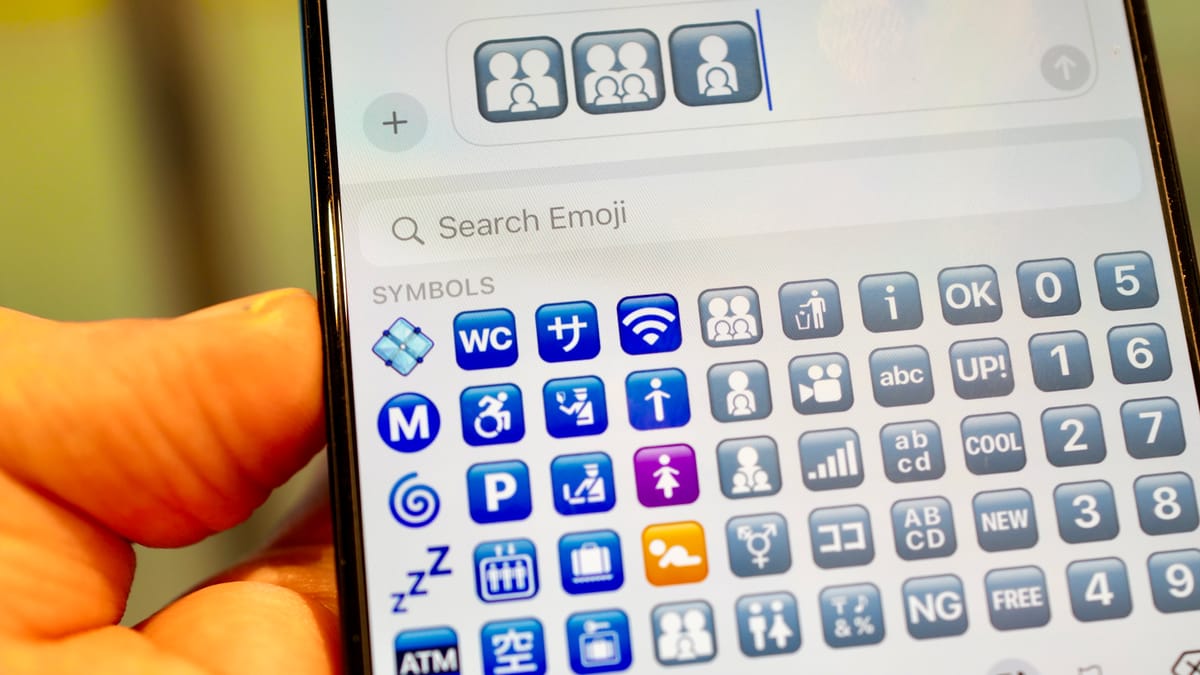
And that's a good thing.
For too long, the many yellow family emojis have been 'close enough' as a stand-in for white families, but useless for darker skinned families wanting to represent themselves.
A change to the family emoji set has been a long time coming, and while the solution won't please everyone, it is categorically more equal than the previous situation.
What changed?
Family emojis that once showed as a collection of yellow men, women, boys and girls are now represented with genderless silhouettes as part of a recommendation from Unicode in 2023 and included as part of today's iOS 17.4 software update.
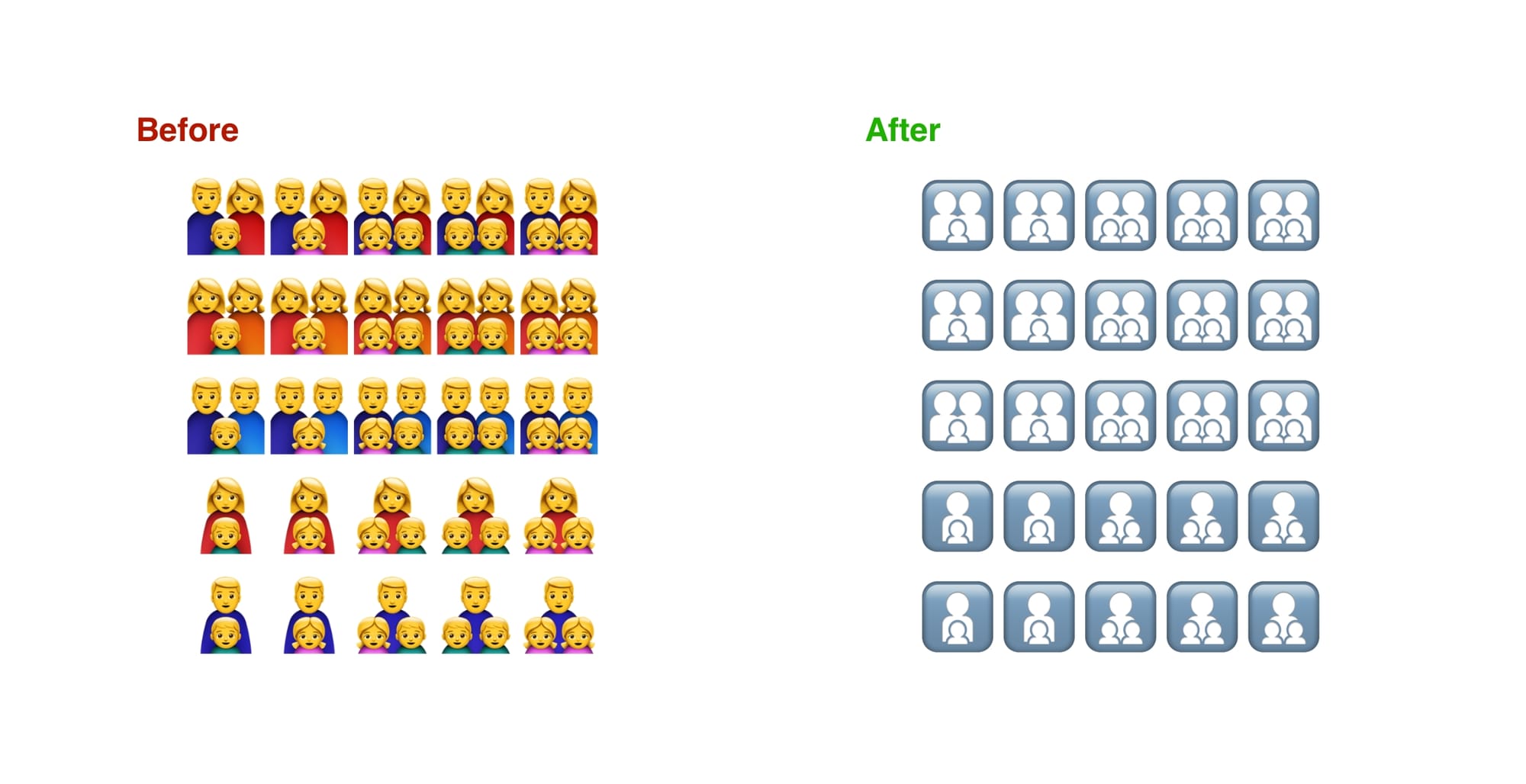
To be more precise, Unicode recommended the changing of existing family emojis to use this silhouette style, and added four new family combinations:
- 🧑🧑🧒 Family: Adult, Adult, Child
- 🧑🧑🧒🧒 Family: Adult, Adult, Child, Child
- 🧑🧒 Family: Adult, Child
- 🧑🧒🧒 Family: Adult, Child, Child
In addition, family emojis are now considered symbols, for the purpose of categorisation.
They'll no longer be found after the people and couples on the keyboard, but can be found in their demoted position between the 🅿️ P Button and 🎦 Cinema symbol.
When did this happen?
iOS 17.4 came out today – 5 March 2024 – and includes these changes. Those with access to Google's latest emoji updates, will also see these changes, and may have done for the past few months.
Android is a little more varied when it comes to which devices get emoji updates, and when. So some might see this now, some will get the change later. Google's update more closely followed the recommendation from Unicode, and kept gendered hairstyles in the silhouettes for the existing options.
As can be seen on Emojipedia, Samsung phones now use updated silhouette styles for the new family emojis, but there has been no retroactive change (yet?) for the previous 25 family emojis.
Why not just add black families?
I last wrote about this topic in 2020 when the prevailing view was to keep the yellow family emojis 'as-is'.
There's plenty more background in that article covering other options considered by Unicode to address the shortcomings of the yellow family unit, as well as the benefits and drawbacks of each approach.
The simple answer is that the only two options fully addressed the gap: all or nothing.
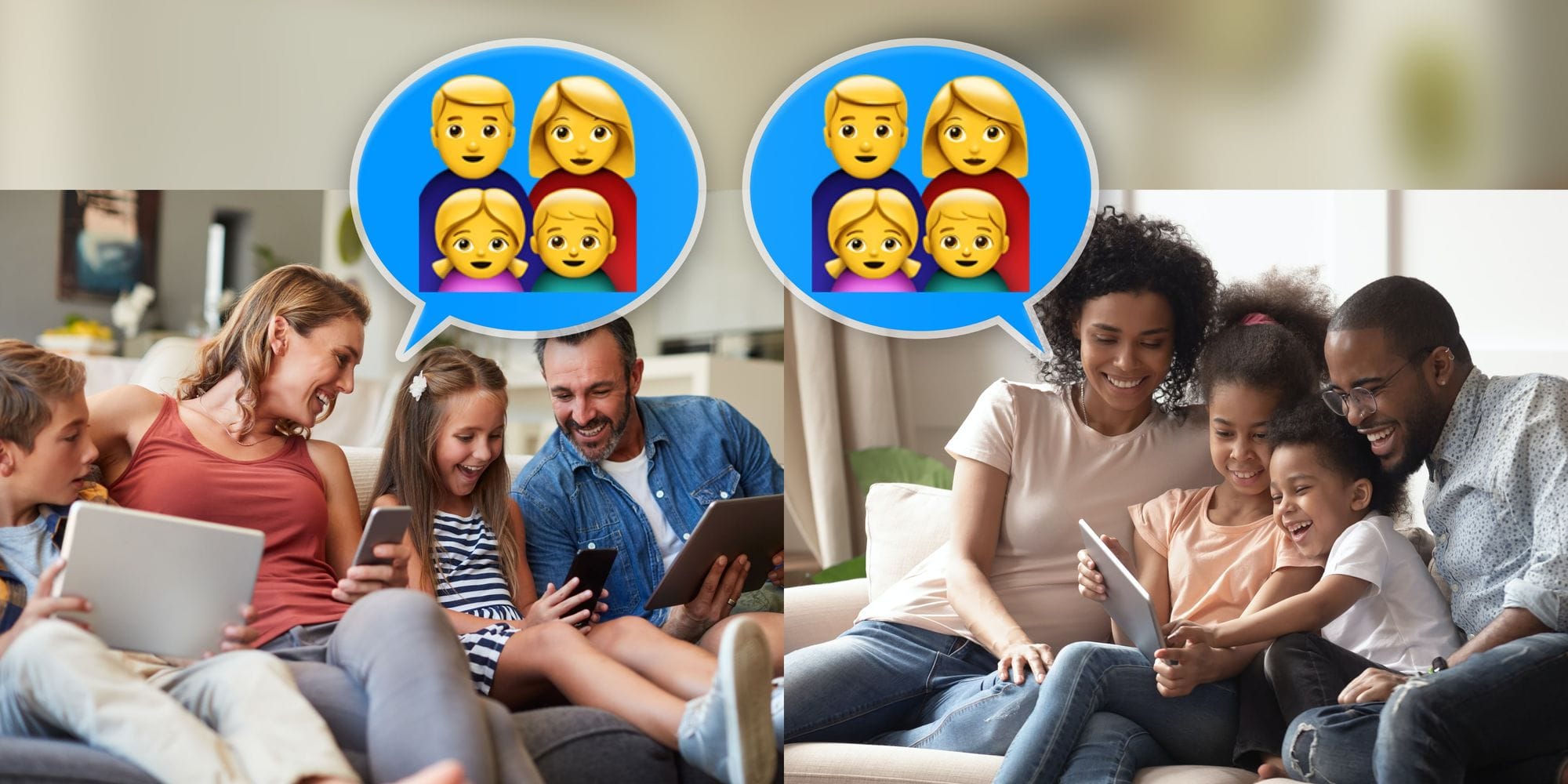
After a proposal for 7,230 new family emojis was declined in 2019, the remaining option to fix the issue of the yellow family emoji was what we see today. A set of family silhouettes, lacking any detail to identify gender or race.
Additional Background
The new silhouette-style family symbols were agreed by Unicode in September 2023, as part of Emoji 15.1.
Two relevant documents published in recent years by the Unicode Emoji Subcommittee are:
a. Review of options in 2020 resulting in no change: Multi-skintoned Families for Unicode 14.0: Exploration and Recommendations
b. A new path forward proposed in 2022: Guidelines for Family Emoji ZWJ Sequences that currently lack RGI tone support
The specific recommendation for family emojis to be replaced with silhouettes states:
Adding toned support for the last remaining “people” emoji (see Fig 4) poses unique solutions and associated consequences L2/20-196. This document is an update on established ESC priorities pursuant to L2/19-101 with a focus on FAMILY emoji. In 2019, the subcommittee explored seven paths forward to extend skintone support to the existing 27 family emoji as described in L2/19-392. Later, in 2020 this path was ultimately declined as described in L2/20-114.
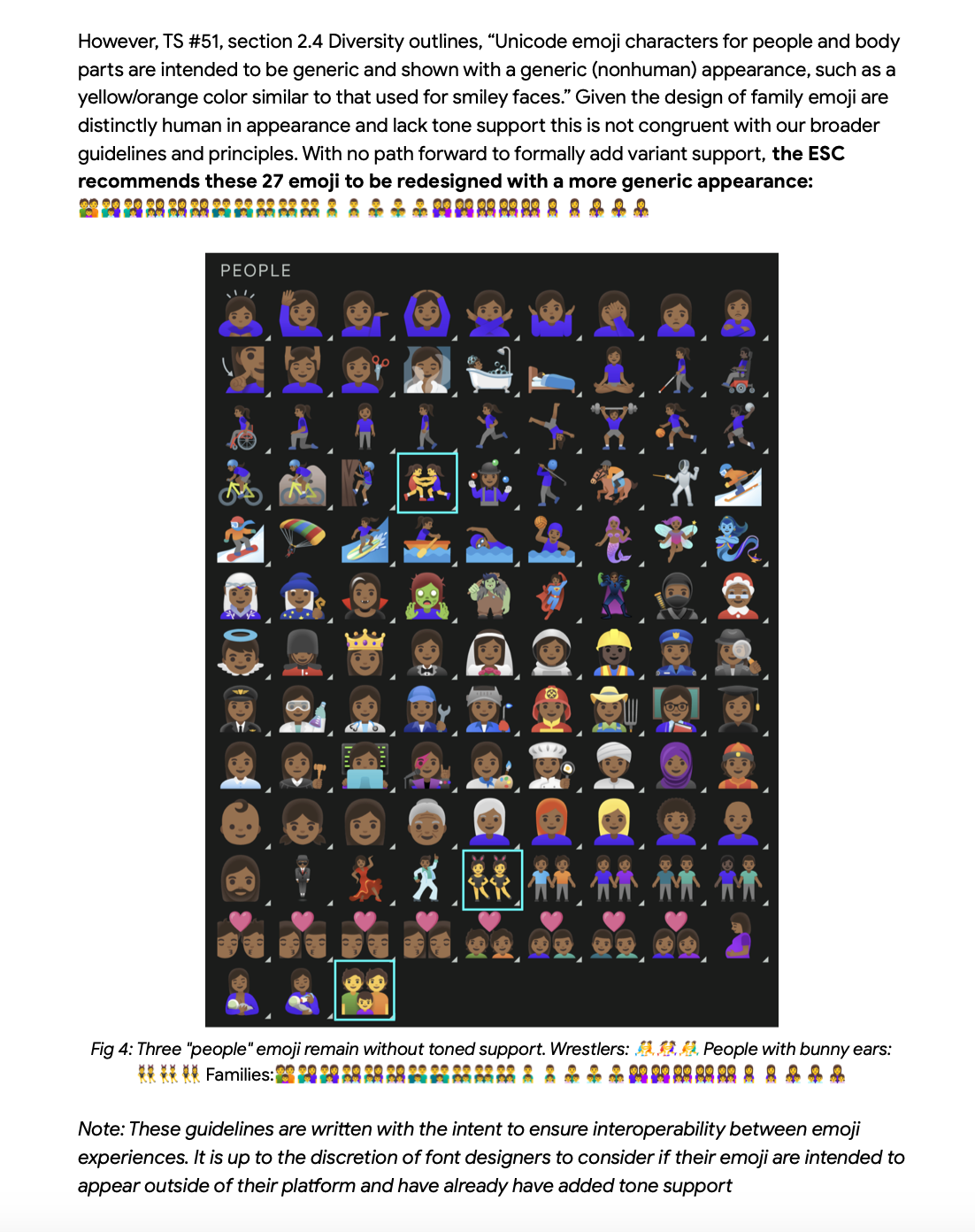
As reported by Keith Broni at Emojipedia, Google's method here was to keep gendered silhouettes for the existing families. While Apple has also removed gender from these earlier (now hidden) family emojis.
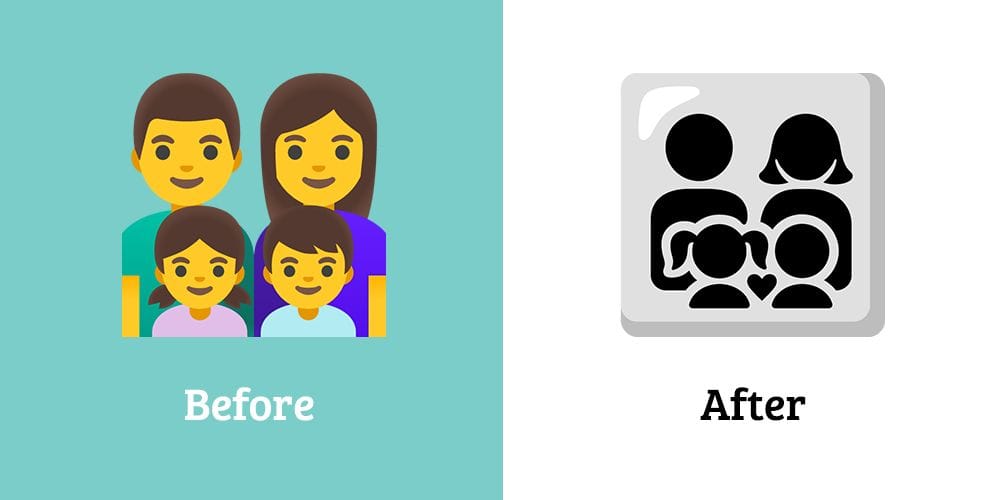
Apple could have minimised claims of retroactively changing the meaning of emojis by following Unicode and Google's lead here. Even if the practical difference at emoji sizes is minimal.
Equality means equality, even for emojis
Some pushback I've received over the years while advocating for improved family emoji support falls along the lines of does it really matter or who cares? This feedback, I note, has rarely come from black or brown families.
These latest changes may seem small or unnecessary to some, but for many, they are long overdue.
As I wrote in 2020:
Silhouettes might please no-one, but at least they might displease everyone equally.
And that's what we've ended up with today: silhouettes that make the family emoji as lacking in utility for white families now, as it has been for black families for more than a decade.
(at least we've moved on from this nightmare from 2012 ⬇️)
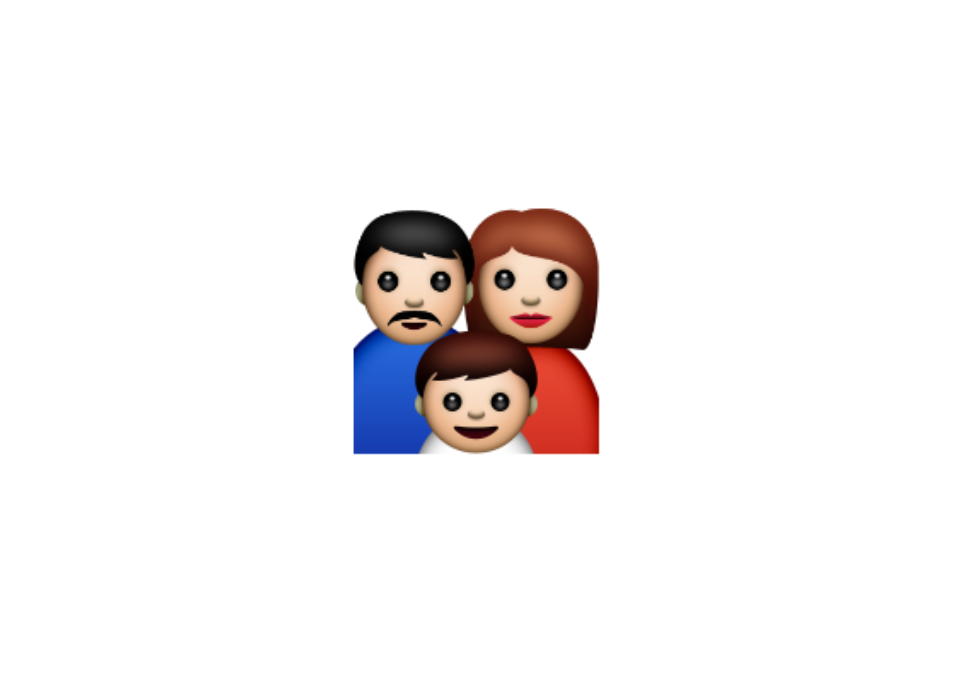
Disclaimers:
- I was a member (and at one time, a vice chair) of the Unicode Emoji Subcommittee during much of the time discussed in this post.
- As Chief Emoji Officer at Emojipedia during the same years, I was also reporting on the status of these updates for the wider world.
- I believe that removing humans from the early emoji sets would have avoided many issues. Every solution from this point forward will be a compromise, and there are many thoughtful people attempting to make the best of what they've been given.
- While I remain founder of Emojipedia, my opinions here do not represent Emojipedia itself nor do they represent Unicode or the Unicode Emoji Subcommittee.
- I think there should be fewer new emojis overall, yet also appreciate the new 🍋🟩 Lime emoji coming into existence. People contain multitudes.